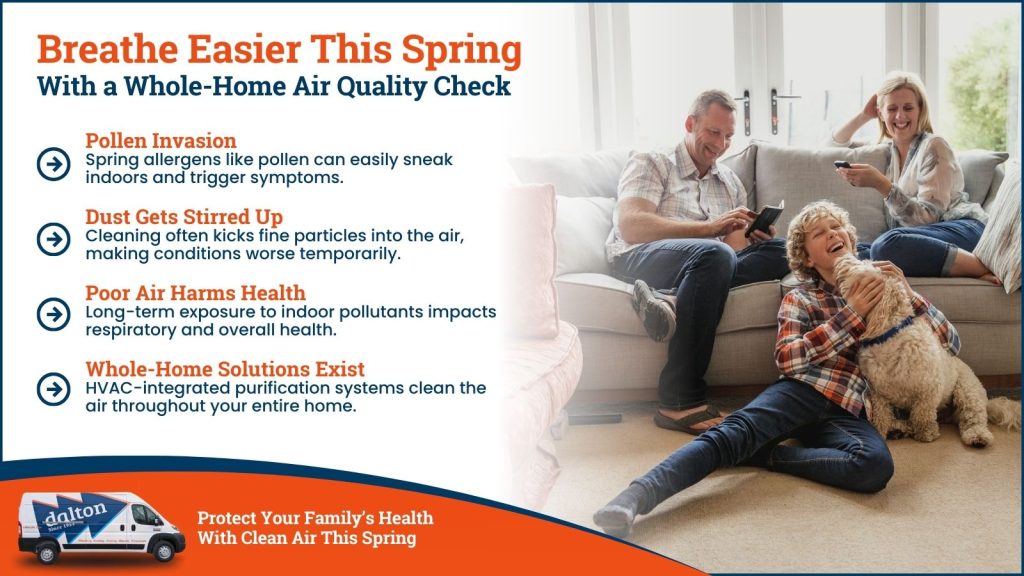When the sun starts shining longer and the trees begin to bloom, it’s a clear sign that spring is here—and with it comes the age-old tradition of spring cleaning. Homeowners roll up their sleeves, deep-clean carpets, scrub windows, and declutter closets. But amid all the wiping, washing, and organizing, one crucial aspect of home wellness often goes overlooked: indoor air quality. What’s going on with your indoor air quality in Cedar Falls, IA?

You may not see it, but the air inside your home can harbor a surprising number of contaminants. Everyday activities like cooking, burning candles, using cleaning products, or simply walking across a dusty floor can release volatile organic compounds (VOCs), allergens, mold spores, and fine particles into the air. According to the EPA, indoor air can be two to five times more polluted than outdoor air—and during spring, this problem often intensifies.
Allergens
Spring may bring fresh air outside, but it also introduces new challenges for indoor air. As flowers bloom and grasses grow, pollen levels spike. These microscopic particles can easily make their way inside through open windows and doors or hitch a ride on your clothes and pets. For allergy sufferers, this means more sneezing, watery eyes, and general discomfort—even when they’re indoors.
Dust
Then there’s the cleaning itself. Ironically, many traditional spring cleaning activities can make air quality worse in the short term. Stirring up dust from baseboards, upholstery, or shelves can send clouds of fine particulate matter into the air. Some cleaning products release harsh VOCs that irritate the lungs and eyes and, over time, may contribute to more serious health concerns. Even vacuuming, if not done with a HEPA filter, can recirculate allergens rather than remove them.
Health Consequences
The consequences of poor indoor air quality extend beyond allergy symptoms. Long-term exposure to airborne contaminants can aggravate asthma, contribute to respiratory infections, and even impact cardiovascular health. Children, the elderly, and individuals with pre-existing conditions are particularly vulnerable. Additionally, excess moisture and poor air circulation can encourage mold growth, which damages your home’s structure and creates further health hazards.
So, what can homeowners do to protect their families and homes during this season of renewal?
Whole Home Solutions
While regular cleaning and proper ventilation are essential, they often aren’t enough on their own. That’s where whole-house air filtration and purification systems come in. Unlike portable air purifiers that cover only one room at a time, whole-house systems work with your HVAC setup to clean the air throughout your entire home. These systems can trap dust, pollen, pet dander, mold spores, and even neutralize odors and harmful gases, creating a cleaner, healthier indoor environment.
Spring is the perfect time to reassess not just the cleanliness of your home, but also the quality of the air your family breathes every day. Before you finish your spring cleaning checklist, make sure to consult with an indoor air quality expert from our team of qualified technicians. We can assess your home’s specific needs and recommend a whole-house solution tailored to your lifestyle and health concerns.
This season, don’t just clean for appearance—clean for wellness. Because when it comes to spring cleaning, the air you breathe deserves just as much attention as the floors you mop.
At Dalton Plumbing, Heating, Cooling, Electric and Fireplaces, Inc., your comfort is our promise! Contact us today for HVAC service in Cedar Falls, IA.

